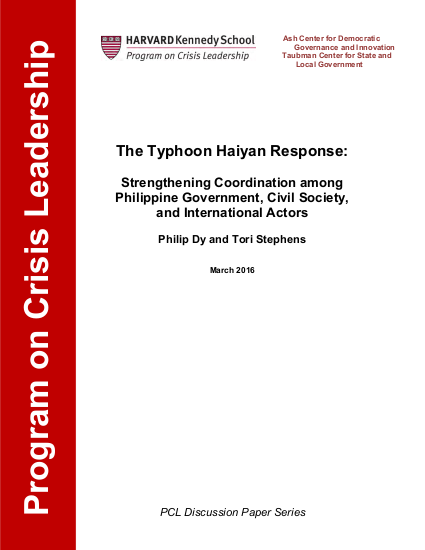
Typhoon Haiyan devastated the central Philippines in November 2013, claiming more than 6,300 lives, displacing more than 4 million people, and disrupting the economy and livelihoods in some of the country’s poorest regions for years to come.
The Haiyan response has been held up as a largely effective humanitarian operation, and the transition from response to recovery phases was swift. However, evaluations have also found that the international operation failed to adequately join with national systems and overlooked civil society coordination opportunities.
With these coordination gaps and potential opportunities in mind, this discussion paper examines factors that affected the Philippine government’s ability to coordinate the Haiyan response and the international community’s ability to participate.